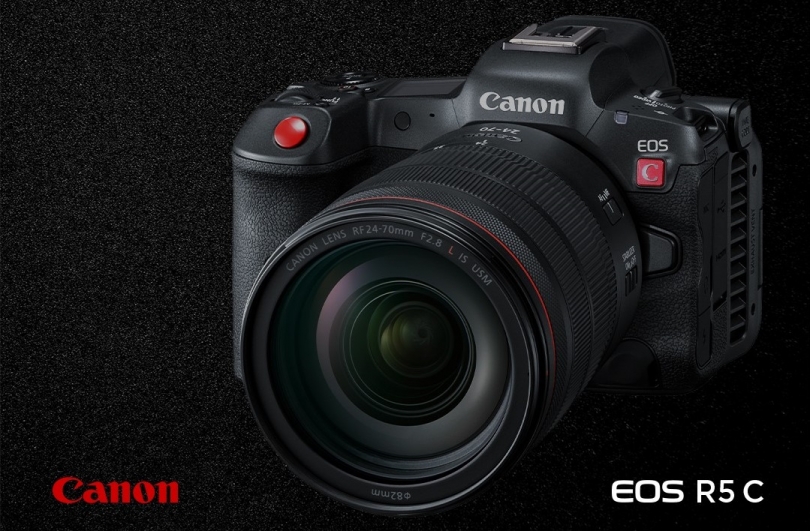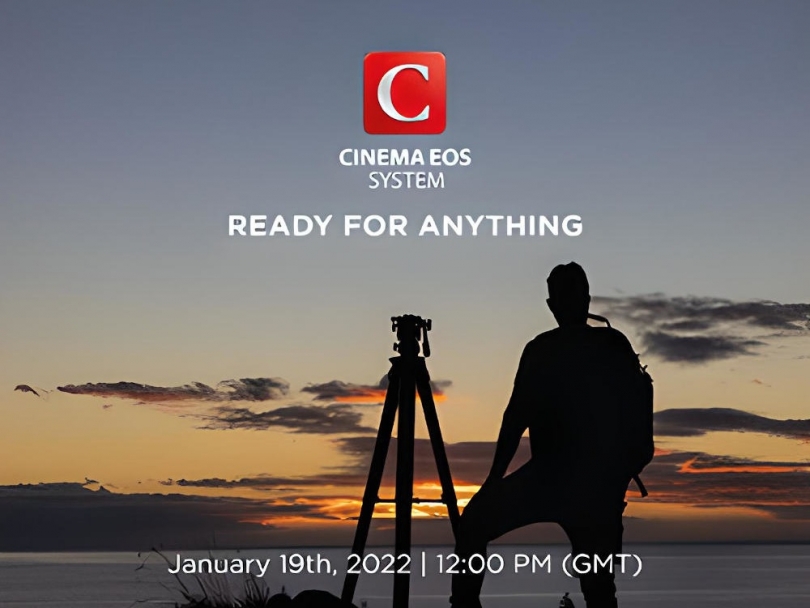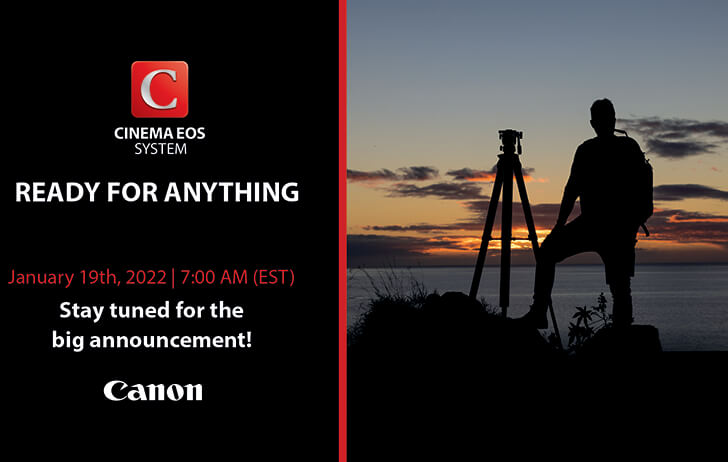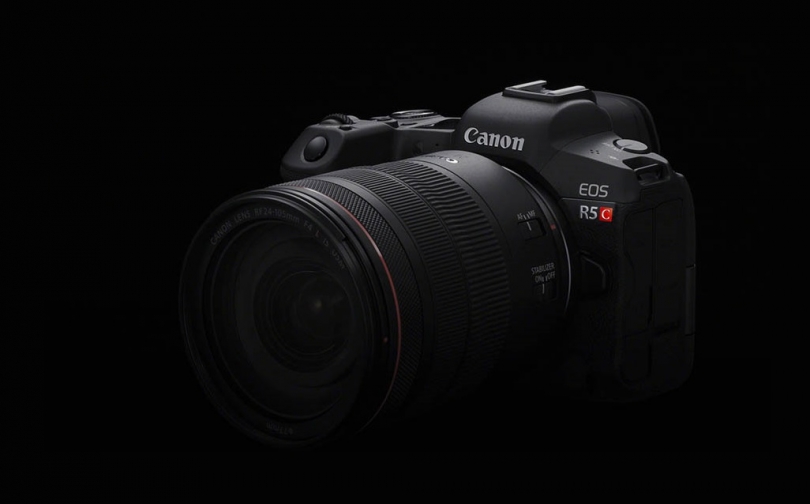
Introduction 'The EOS R5C is more than just an EOS R5 with a fan' is the message Canon seems keen to convey. And the differences between the two cameras start to stack-up, the closer you look.
But to me, it looks like some of the shared hardware ends up being both the EOS R5C's greatest shortcoming while underpinning its main strength.
In this article we'll take a look at what the EOS R5C gains and loses, compared with the regular EOS R5.
Plus fan, minus IBIS
At a hardware level, the most obvious difference between the EOS R5 and the R5C is the inclusion of a cooling fan on the back of the Cinema version of the camera. This is a standard feature of most Cinema EOS cameras and allows the R5C to record for unlimited duration in all its video modes. You can choose between always-on and auto (which turns the fan off when the camera is rolling, unless absolutely necessary).
The other notable difference is that the EOS R5C does not include an in-body stabilization mechanism. Canon didn't explain this decision, but points out that the R5C can co-ordinate its digital stabilization with the stabilizing action of any IS lens you mount. This digital correction comes with a 1. 1x crop, but means you're not entirely dependent on external stabilization for video work.
Size and weight differences
Canon EOS R5C
Canon EOS R5
Weight (with battery and CFe Type B card)
770g (1. 7 lbs)
738g (1. 63 lbs)
Dimensions
142 x 101 x 111 mm
(5. 6 x 4. 0 x 4. 4")
139 x 98 x 88 mm
(5. 5 x 3. 8 x 3. 5")
In its GH5S, Panasonic said it had omitted in-body stabilization because it can interact badly with some types of movement and stabilization systems (though also: the GH5S’s oversized sensor leaves little room for maneuver within the Micro Four Thirds imaging circle). In the case of the R5C, it’s worth noting that it’s easier to thermally couple the sensor to the cooling system if it’s directly attached to it.
What they share
In most other respects, the EOS R5C and EOS R5 share an awful lot in common. Crucially, they share the same 45MP Dual Pixel AF CMOS sensor, which Canon (perhaps optimistically) describes as delivering around 15EV of dynamic range. They also have the same 5. 76M dot electronic viewfinders and fully articulating 2. 1M-dot rear touchscreens.
The hand-grips are the same, as are the batteries contained within them. Both have the same function buttons positioned in the same locations, but on the EOS R5C each button has indicators in grey to denote the default behavior in stills mode and a white label alongside the button giving its video function (or Fn button number).
Both cameras offer a single CFexpress slot and a UHS-II SD card slot. And, while both cameras have both headphone and mic sockets, they also both have Type D 'Micro' HDMI ports, despite the R5C's more explicit focus on video work.
The EOS R5C also gains the R5's eye/head/person detection autofocus, even in video mode, along with the motorsports recognition AF mode introduced in the EOS R3.
Separate video and stills modes
It's become increasingly common for cameras to let you choose which settings carry over from stills to video shooting, and for video mode to show a series of different menu options. But we've never seen a separation quite as stark as on the EOS R5C.
A three position switch replaces the EOS R5's on/off control, and lets you select photo or movie mode. Turn the switch to 'Photo' and you'll encounter an interface that's identical in every way to the one on the EOS R5: the same menus and the same on-screen displays. Flip the switch the other direction, though, and you'll encounter an interface and menu system that's borrowed directly from the Cinema EOS line. Every on-screen display and menu option has been designed with film-makers, rather than photographers in mind.
Additional video modes
The EOS R5 already had an impressive selection of video specs, with 8K capture up to 30p in a choice of 8-bit H. 264, 10-bit H. 265 or 12-bit Canon RAW. The EOS R5C takes this further, offering 12-bit Cinema RAW Light (as used on other Cinema EOS cameras) at up to 8K/60p.
Cinema RAW Light includes three compression quality levels: HQ, Std and LT. For comparison, at 8K/30, Cinema RAW Light (Std) takes up around 2. 0 Gbps, whereas the R5's Canon RAW mode requires 2. 6 Gbps and its Canon RAW Light option generates 1. 7 Gbps of data.
The EOS R5C can also shoot 5. 9K Raw video from a Super 35 crop or 2. 9K capture from a Super 16 region of the sensor.
When not shooting Raw video, the EOS R5C can shoot XF-AVC footage (a professional 422 10-bit format with MXF-wrapped H. 264 AVC file with metadata), at up to 4K/120 in a choice of Long GOP or ALL-I modes. The alternative is MP4 files, primarily using H. 265 Long GOP compression, these allow for up to 8K/30 capture.
Additional video features
In addition to the more sophisticated video modes, the EOS R5C gains a series of additional video features, perhaps the most widely valued being the addition of wave form monitor displays. The wave form lets you assess exposure and see where in the scene different brightness values are occurring, making it a much more sophisticated tool than the histogram used in stills mode. There's also a false colour overlay to help assess exposure.
The EOS R5C also gains a Timecode socket through which it can synchronize with other devices, to line-up the footage and audio captured with different devices.
The R5C also includes the option to capture HDR footage in the Hybrid Log Gamma (HLG) broadcast standard. This provides an alternative to the PQ HDR footage that both the R5 and R5C can capture.
Other option include the ability to show a 'desqueezed' preview of footage shot with anamorphic lenses (though there's no option to record using a taller region of the sensor), and the option to overlay a range of aspect ratio guides, for if you're planning to output something other than 1. 89:1 DCI or 16:9 UHD footage.
Battery limitations
The EOS R5C is based around the same LP-E6NH batteries used by the conventional EOS R5, with the same degree of backward compatibility to the E6N and E6 units, and the option to add the BG-R10 battery grip to boost battery life. But this creates an unusual limitation.
When recording at its fastest data rates, the internal battery doesn't have enough power to operate the lens mount. This is no problem if you're using manual focus, manual iris cine lenses, but means you lose autofocus and iris control of RF and EF-mount lenses, in the most challenging video modes.
Video modes that restrict power to the lens mount
Frame rate
Compression modes
8K Cinema Raw Light
(Full frame)
Above 30p / up to 60p
LT
5. 9K Cinema Raw Light
(Super 35)
Above 30p / up to 60p
LT, STD
2. 9K Cinema Raw Light
(Super 16)
Above 60p / up to 120p
(Slow and Fast rec mode)
LT, STD, HQ
You can overcome this limitation by using an external power source, such as the PD-E1 USB power supply, the new DR-E6C (a DC-power dummy battery) with a suitably powerful DC power source, or external USB power banks such as the Anker Powercore 26800 PD which, critically, can deliver 9V, 3A power. The 7. 4V of the LP-E6NH isn't sufficient, even if you use two by adding a battery grip.
Card limitations
Canon has done its best to squeeze the most out of the card configuration carried over from the EOS R5. The R5C provides lots of options for using its Compact Flash express and SD slots, for example:
Examples of media splits across dual slots:
Compact Flash express slot
Secure Digital Slot (V90 card)
Cinema RAW Light
XF-AVC or MP4 (H. 264 or H. 265)
Cinema RAW Light
8-bit 4:2:0 Proxy
Video
Audio (WAV)
8K
4K
XF-AVC All-I
XF-AVC Long GOP
Which is great for proxy recording, but it's hard not to think that the simultaneous redundant recording and relay recording (record to slot 2 when slot 1 is full) options would have benefited from a pair of CFe slots, especially if you consider the vast data rates of Cinema RAW Light capture (only a few Super 16 2. 9K modes are small enough fit on a V90 card).
Does the R5C indicate that Canon held back features from the R5?
Do we think the R5's video was held back, in order to leave room for the R5C? No, not even at our most cynical. For a start, it would be madness to willfully hamstring one of your reputation-burnishing models.
Canon acknowledged, prior to launch, that the R5 couldn't sustain shooting for long in its most intensive video modes. but almost immediately rewrote its cool-down/protection logic in response to the overheat PR disaster that unfolded, to squeeze as much out of the camera as it could. Those aren't the actions of a company trying to intentionally hold its camera back.
Equally, look at the relationship between Panasonic's S1 and S1H cameras. The S1 can record video for extended periods of time, without a fan, but Panasonic still offers an actively cooled variant to ensure that video professionals can rely utterly on their camera. From what we hear, the S1H sells quite comfortably, with little evidence of the S1 being held back. The R5C provides things that videographers might need, but that couldn't have been included in the R5 without essentially making it into an R5C, and making stills shooters pay the cost of that. It's a different camera for a different set of users that couldn't comfortably be addressed with a single model.
Out of adversity
We suspect the limitations of card slot and battery power will be widely discussed, despite them only applying in very specific circumstances and affecting a fairly limited number of users (generally Raw video shooters, particularly those using the fastest modes). And it's probably the case that these limitations wouldn't have existed if Canon had designed the R5C from a blank piece of paper, rather than relying so heavily on EOS R5 hardware.
However, the benefit of building on a comparatively mass market model is that it keeps the EOS R5C comparatively affordable. Essentially the EOS R5C gives you a credible Cinema EOS camera with a couple of (pre-disclosed) limitations, for a $600 premium over the regular R5. Given how common it is for cinema camera price tags to stretch to five digits, a launch price of $4500 helps put those restrictions into perspective.
Though we're still not happy about that Micro HDMI port.
. dpreview.com2022-1-19 15:00



